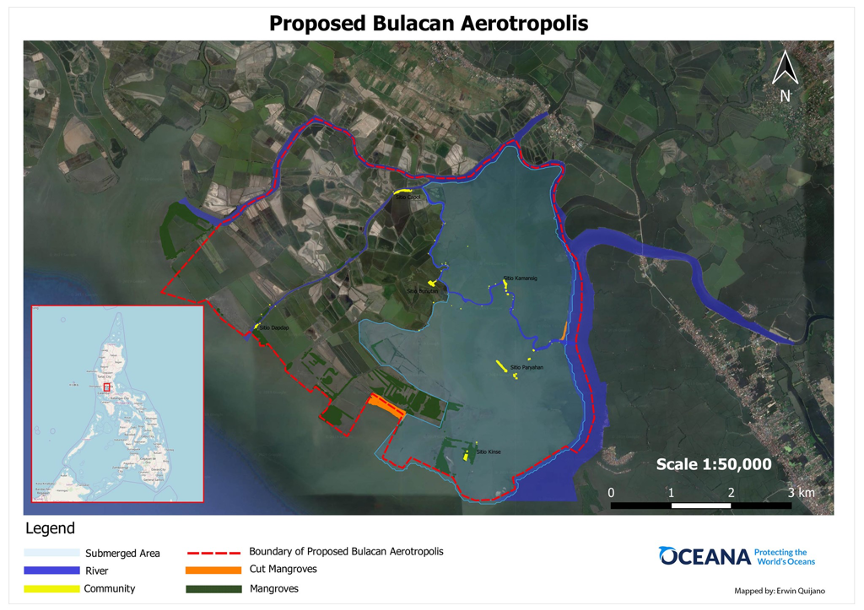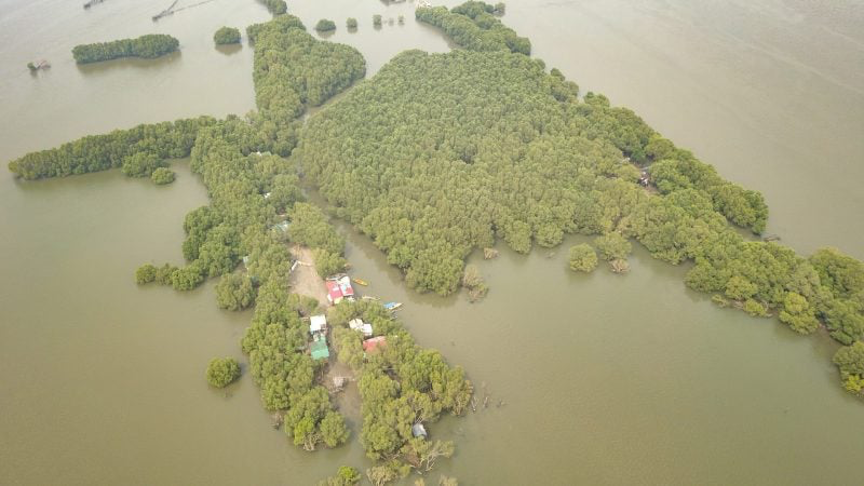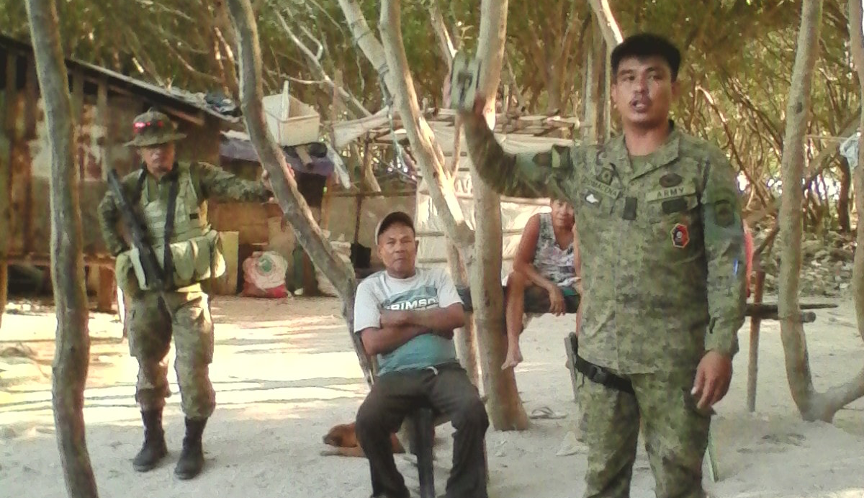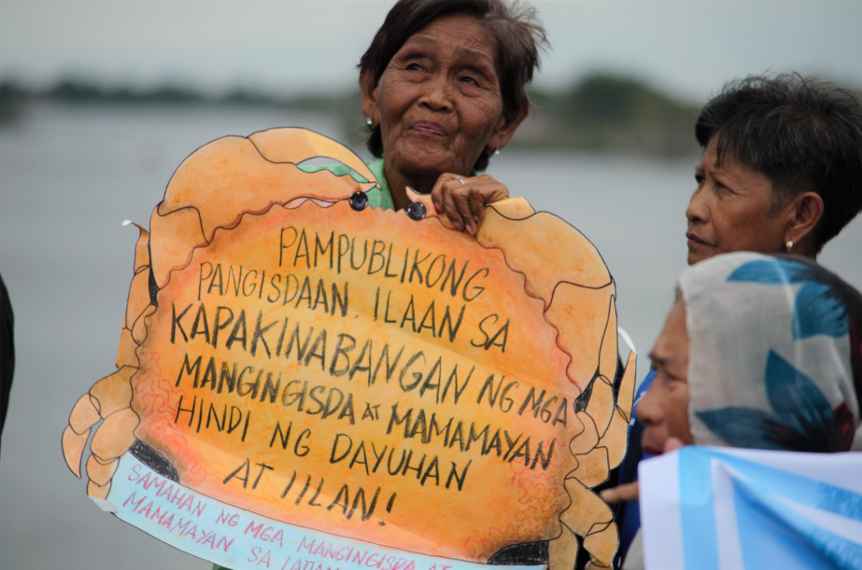The House of Representatives Ways and Means Committee has recently approved on second reading the bill granting the franchise of big business conglomerate San Miguel Corporation (SMC) for the proposed 2,500-hectare Bulacan International Airport reclamation project, also known as the Bulacan Aerotropolis.
SMC has promised the moon and the stars to the Philippine government with this unsolicited mega infrastructure project. Chief among its claims are that the Aerotropolis will create one million jobs, will accommodate 100-200 million passengers annually, and will mitigate the very real flood risks it faces through spillway engineering and, more recently, through mangrove reforestation. The advent of the COVID-19 pandemic has been treated by SMC as an opportunity to further its agenda despite outstanding criticisms over its lack of environmental and human rights due diligence. SMC has now pitched the Aerotropolis as the corporation’s contribution to the Duterte government’s infra-heavy COVID-19 economic recovery strategies.
We argue that the Aerotropolis, an ecological monkey wrench into the extremely fragile state of Manila Bay’s coastal ecosystem to begin with, will actually feed into the unprecedented public health and socio-economic crises that will afflict the Philippines well into 2021. Ultimately, it will feed into the corruption and fascism upon which the Duterte administration’s COVID-19 response and recovery plans are hinged.

A catastrophe waiting to happen
Experts have warned of complex ground subsidence and flooding risks that would have catastrophic consequences both for the airport complex itself and to the adjacent coastal towns and cities as well. We estimated at least a million people across the flood-vulnerable towns and cities in Bulacan province alone will potentially be affected.
A crucial problem would be the proposed infrastructure’s conflicting land use with the last vestiges of the once vast mangrove forests covering Northern Manila Bay. These wetlands have long served as the roosting sites for thousands of migratory birds which improves the ecological health of the entire bay.
A recent mesocosm study led by Professor Rene Rollon of the University of the Philippines Institute of Environmental Science and Meteorology projected that less than one percent of Manila Bay’s original mangrove forest cover, once a sprawling 75,000 to 90,000, is presently left at less than 1,000 hectares.
The study urged authorities to “reconsider Manila Bay development plans which may have high probabilities of further compromising the ecological integrity of the bay. Rather, strategic plans to restore a significant amount of these former mangrove areas should be pursued.”

Aerial view of the Sitio Kinse, a community shrouded in mangroves threatened by the Aerotropolis. Photo credit to AKAP Ka Manila Bay
A 2,500-hectare steel-and-concrete sprawl—especially one that has failed to conduct an honest to goodness environmental impact assessment (EIA) of its
cumulative impact alongside with more than 30,000 hectares of other proposed reclamation projects in Manila Bay—clearly falls under the kind of development plans Prof. Rollon and his team warns about.
Come hell or high water
The 700 families living in the backwater fishing villages of Taliptip and Dapdap are almost always left off SMC’s advertorials. These coastal communities situated where the Aerotropolis will soon rise are slowly but surely being displaced by the high waters of flood risks, or as we are seeing now, by hell of coercion and militarization.
To recall, these two villages situated in the direct impact area were among the subjects of a human rights and gender risk assessment of land reclamation threats that we conducted across Manila Bay from 2018 to 2019.
The findings on the Aerotropolis were damning: no legitimate public consultations were conducted; no environmental information that would constitute informed consent, such as risk assessments and detailed engineering plans, was made available to the public; there was no due diligence over the cutting of at least 653 mangroves within the project area; and residents have been constantly pressured to self-demolish without just compensation.

A military detachment has been constantly harassing local communities and activists in the coastal villages threatened by the Aerotropolis. Photo credit to AKAP Ka Manila Bay
This constant restriction of community members from being able to freely decide on the acceptability of the Aerotropolis continues up to this date. At present, only seven families remain in the fishing villages after a series of harassments by the police, military, and SMC personnel amid the health and socio-economic crises caused by COVID-19.
Post-pandemic paradox
So does the Aerotropolis have a place in the post-pandemic ‘better normal’ promised by the Duterte administration?
Public health experts have already pointed out that the further destruction of our biodiversity will only worsen our vulnerabilities to more zoonotic pandemics like COVID-19. SMC’s tokenistic mangrove planting propositions pale in comparison to the ambition needed to restore Manila Bay’s mangrove area into healthy levels.

Fisherfolk families are still holding out against the ‘done deal’ of the Aerotropolis. Photo credit to AKAP Ka Manila Bay
The Aerotropolis’ consequent flood risks and urban sprawl would altogether constitute a triple threat with the raging pandemic. Floodwaters will worsen the already severed restriction to freedom of mobility caused by the longest COVID-19 lockdown in the world, which would also potentially transmit the virus with an increased amount of wastewater expected from the sprawl.
The disregard of human rights, already an established pattern even before the pandemic and further worsened by the militaristic COVID response of the Duterte government, builds into what human rights lawyers have called an ‘infrastructure of impunity’ that systematically and brutally suppresses criticism and dissent.
Progressive economic think-tank IBON Foundation has already pointed out that the drastic decrease in tourism portends a weaker economic output from the transportation sector, to which 75 of the 100 ‘Build, Build, Build’ infrastructure projects the Duterte government caters.
IBON Foundation further tells that in times of a public health crisis, investments should instead be prioritizing social infrastructure such as hospitals and socialized housing. It is thus a paradox to call such this P700-billion money sinkhole as an ‘economic recovery’ strategy. We should instead be restoring our coastal greenbelts in Manila Bay, focusing on revitalizing its fisheries, and investing in sustainable development options that do not compromise people and planet in the name of profit.
References:
[1] http://kalikasan.net/articles/1-m-jobs-for-1-m-displaced-by-bulacan-aerotropolis-no-deal-says-kalikasan/
[2] https://www.facebook.com/groups/88989117105?post_id=10157832354057106
[3] https://www.cnn.ph/business/2020/9/1/house-oks-smc-franchise-bulacan-airport.html
[4] https://manilastandard.net/business/transport-tourism/274068/san-miguel-says-bulacan-airport-construction-to-create-1-million-jobs.html
[5] https://www.bulatlat.com/2018/09/28/smc-project-worsen-flooding-displace-families-bulacan/
[4] https://business.inquirer.net/256253/smc-readies-master-plan-solve-bulacan-flood-woes
[5] https://www.bloomberg.com/news/articles/2020-08-19/philippine-beer-giant-to-grow-crabs-to-stop-floods-at-airport
[6] https://www.gmanetwork.com/news/money/companies/704666/nmia-a-threat-to-manila-bay-ecosystem-kalikasan-pne/story/
[7] http://kalikasan.net/articles/gender-and-human-rights-risk-and-impact-assessment/
[8] https://www.facebook.com/CEC.Phils/posts/3508787259165335
[9] https://cnnphilippines.com/news/2020/4/22/enviromental-advocates-addressing-ecological-imbalances-covid-19-fight-earth-day-2020.html
[10] https://www.dutchwatersector.com/news/sewage-water-as-indicator-for-spreading-of-covid-19
[11] https://news.mongabay.com/2020/05/deaths-arrests-and-protests-as-philippines-re-emerges-from-lockdown/
[12] https://iadllaw.org/2019/10/national-union-of-peoples-lawyers-of-the-philippines-concludes-fifth-congress/
[13] https://www.ibon.org/on-the-bbb-fix-why-do-you-build-me-up/
Leon Dulce is the national coordinator of the Kalikasan People’s Network for the Enviroment (Kalikasan PNE)





























